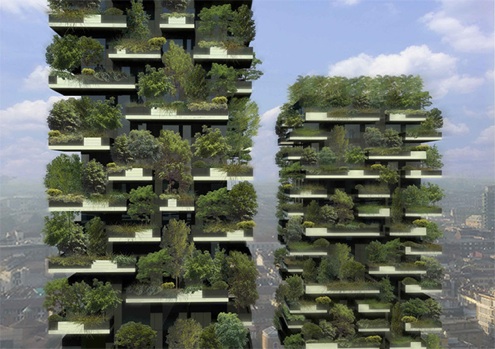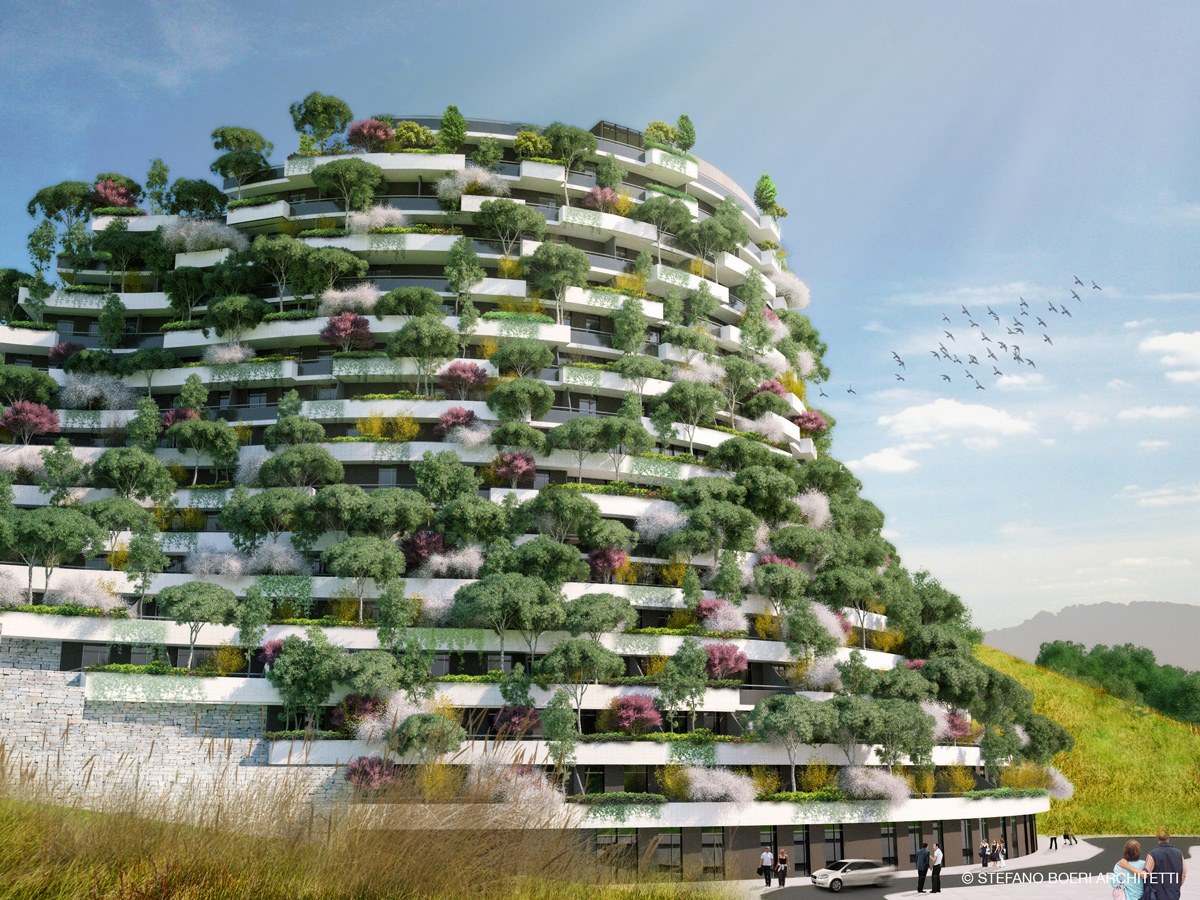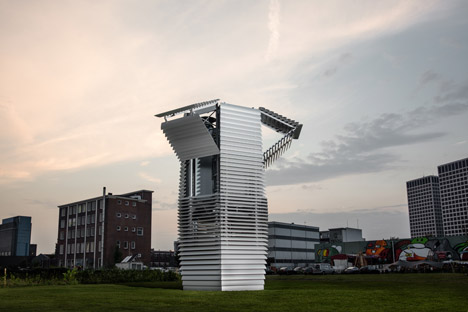
Ever since Malaysian ecologist-architect Ken Yeang introduced the concept in the 1990’s, living walls and rooftops have become an increasingly common sight in both residential and commercial buildings. In addition to looking good, planted exteriors also help cut energy costs, and, in the case of rooftop farms, provide urban dwellers with homegrown produce. Now, Stefano Boeri wants to take green architecture to the next level with “Forest Cities” to combat China’s air pollution woes.
The Italian architect’s foray into metropolitan reforestation began in 2014 with two towers in central Milan. Measuring 110-meters (360-feet) and 76-meters (249-feet) in height, they host 900 trees measuring between 3 to 9 meters each and over 20,000 shrubs and plants pre-cultivated specifically for the purpose. The foliage is irrigated by rain as well as the building’s gray water recycling system. The “Bosco Verticales,” or “Vertical Forests,” that are equivalent to a flat area of about 2 acres, provide year-round energy savings and improve the air quality by releasing moisture and converting carbon dioxide into oxygen. The vegetal system also acts as a windscreen, captures dust particles from the air, and blocks noise from the bustling Milan streets, making for a much healthier living environment for the residents.

Boeri’s first project in China is the Forest Mountain Hotel in Guizhou that is scheduled to open this fall. According to the architect, the 31,200 square-meter (231,424 square-feet) structure’s design is inspired by the site's original topography and ecosystem, which is also known as the Forest of Ten Thousands Peaks. Also in the works are two skyscrapers in the city of Nanjing. Similar to those in Milan, the 200-meter (656-feet) tall office building and 108-meter (354-feet) tall hotel will boast 23 species of trees and over 2,500 shrubs and plants. Boeri estimates they will absorb 25 tons of carbon dioxide from the atmosphere annually and produce as much as 60 kg of oxygen every day.
Of course, the three buildings, are not enough to solve China’s smog problem, which is why Boeri is now attempting to create “Forested Cities.” His architectural design team is currently devising plans for a wooded settlement in Liuzhou, a medium-sized city that is home to about 1.5 million residents. All the buildings will have gray water recycling systems and be powered by solar or wind energy. The architect is also hoping to build a green mini-city around Shijiazhuang, an industrial area in northern China that is infamous for consistently being one of the country’s ten most polluted cities.

Boeri is not the only one devising ways to clean up China’s polluted air. In September 2016, Dutch designer Daan Roosegaarde took his massive smog cleaning machine on a five-city tour that began in Beijing. The seven-meter tall tower, believed to be the “world’s largest smog-cleaning machine,” filters 30,000 cubic meters of air each hour — removing even the finest smog particles and releasing fresh, clean air using about the same amount of electricity as a water boiler. The best part is, the captured carbon particles are compressed and transformed into expensive jewelry that is sold to generate funds for the project. With innovations like these, the country’s air pollution struggles may soon be a thing of the past.
Resources: inhabitat.com,dezeen.com,mashable.com, stefanoboeriarchitetti.net